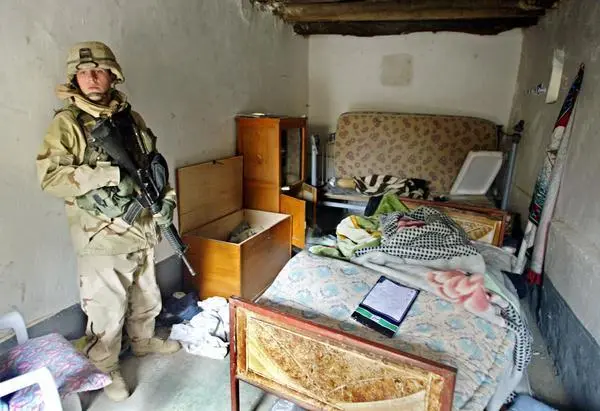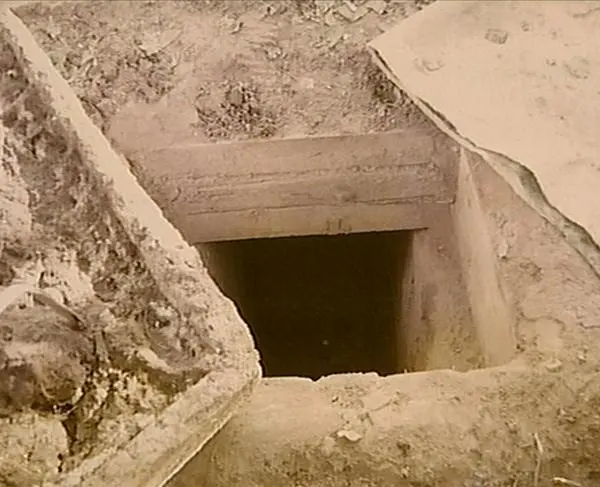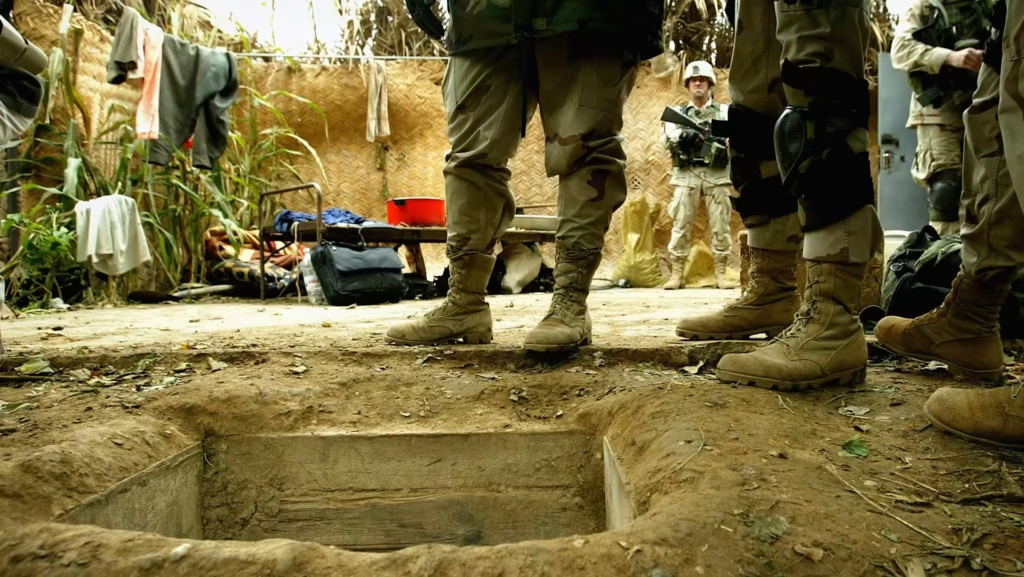For months, he was nowhere to be found. The once powerful man who ruled Iraq for decades had disappeared. Saddam Hussein, who led Iraq with an iron fist for over 20 years, was on the run. After the U.S.-led invasion of Iraq in 2003, the hunt for him became one of the biggest manhunts in modern history.
But where did he go? How did he stay hidden from the world’s most powerful military? And who helped him avoid capture for so long? This is the story of how Saddam Hussein vanished—and how he was finally found.
Life on the Run
In April 2003, the government of Saddam Hussein collapsed. The war had begun just weeks earlier, and already Baghdad had fallen. U.S. troops took control of the capital, and Saddam’s statues were being torn down in the streets. But Saddam himself was nowhere to be seen.

Many thought he might have been killed in the early bombings. Others believed he had escaped to another country. But U.S. officials were sure he was still in Iraq. So, they launched Operation Red Dawn—a large-scale mission to find and capture him.
The truth was, Saddam had gone into hiding in a small town near his birthplace of Tikrit. He was moving from place to place, often sleeping in small huts or underground hideouts. He used a network of loyal supporters, many of whom were from his tribe, to help him stay hidden.
Living Underground
One of the most shocking details of Saddam’s time in hiding was the way he lived. Far from the luxury he once enjoyed as president, Saddam was now living in tiny spaces with no comfort. The most famous of these was a small underground “spider hole”—a dug-out space barely big enough for one person.

This hideout was located on a farm near the town of ad-Dawr. It was covered with bricks and dirt and had a small pipe for air. Inside, it was dark and cramped, with only a blanket, a few snacks, and some cash. He had no phone or radio, and no way to communicate with the outside world.
According to U.S. soldiers who found him, Saddam looked tired and weak when he was captured. He had a long beard and appeared dirty, as if he had not bathed in weeks. Still, he did not resist arrest. He reportedly said, “I am Saddam Hussein. I am the President of Iraq, and I want to negotiate.”
But there was no negotiation. He was taken into custody and later put on trial.
Who Helped Him Stay Hidden?
It wasn’t easy for Saddam to hide for so long. He needed help, and he got it from people who had remained loyal to him even after his regime had collapsed. These included bodyguards, family members, and tribal leaders who believed in him or feared what might happen if they were caught helping him.
Some people risked everything to protect him—offering food, shelter, and even helping him move around secretly. They believed Saddam would one day return to power. In fact, according to reports, Saddam was writing notes and letters during this time, trying to rally his supporters for a future comeback.
But the U.S. military was watching closely. Over time, they captured and questioned many of Saddam’s close allies. Slowly, they narrowed down the search. Bit by bit, they pieced together where he might be hiding.
The Final Capture
On December 13, 2003, U.S. forces finally found him. Acting on a tip, they raided a farmhouse near Tikrit. After searching the area, they discovered a hidden underground hole. Inside it, they found Saddam Hussein.
The operation was carried out by U.S. Special Forces and Iraqi informants. They had been narrowing in on his location for weeks. When they found the hole and opened it, they were stunned to see the former dictator crawl out.

He was immediately taken for medical checks, and video of him being examined was shown around the world. People were shocked to see the once-powerful leader looking defeated and fragile.
What Happened Next?
After his capture, Saddam was handed over to the Iraqi authorities. He was put on trial for crimes against humanity. The court found him guilty for the killing of 148 people in the town of Dujail in 1982, after an attempt on his life.
He was sentenced to death and was executed by hanging on December 30, 2006.
Why His Capture Was So Important
The capture of Saddam Hussein marked a turning point in the Iraq War. It gave the U.S. and its allies a major win and gave hope to many Iraqis who had suffered under his rule. However, the violence in Iraq did not end with his capture. In fact, the years that followed saw more conflict and the rise of new groups, like ISIS.
Still, Saddam’s arrest showed that no matter how powerful someone once was, they could still be brought to justice. His story—of hiding in fear after decades of ruling with fear—is one that many will not forget.
A Leader Who Fell from Power
Saddam Hussein’s fall was one of the most dramatic in recent history. He went from being one of the most feared leaders in the world to living in a hole in the ground. His capture reminded the world that dictators, no matter how strong they seem, are not untouchable.
The story of how he stayed hidden, and how he was eventually caught, will always remain one of the most fascinating chapters in modern Middle East history.
Also read: Dubai’s Past Through Photos: A City Transformed Over Time













